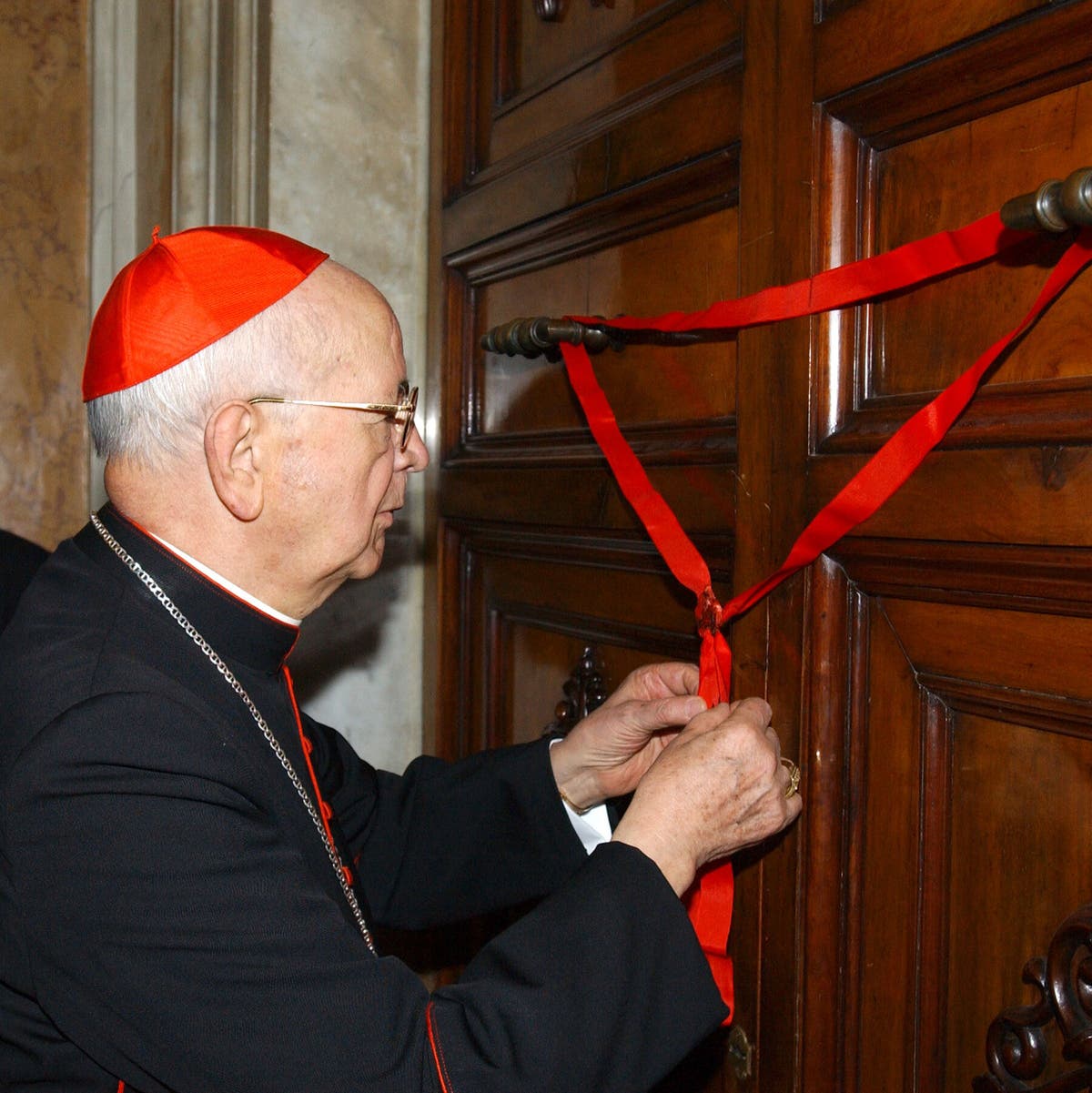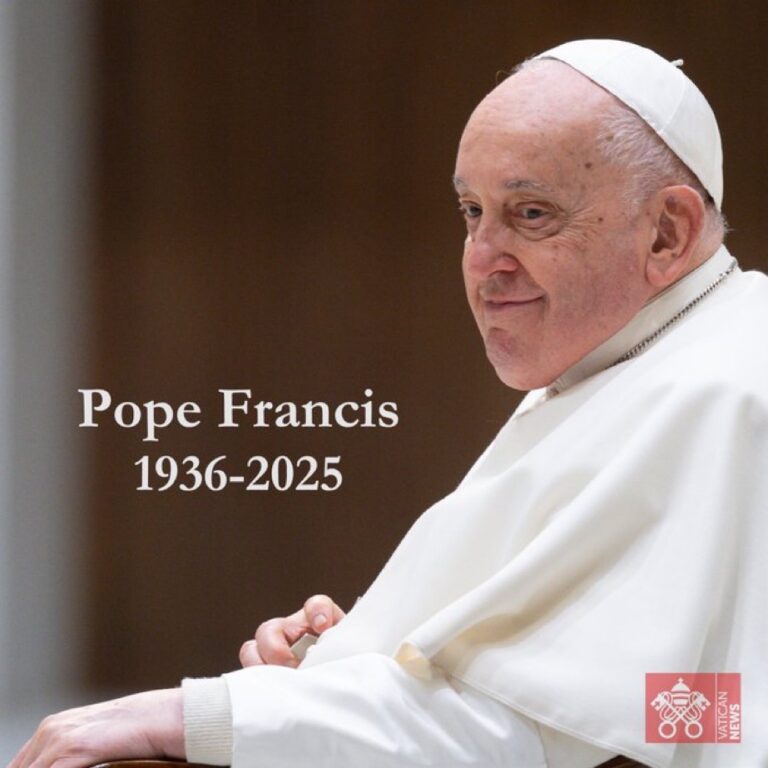CELEBRITY
After Pope Francis’ death on Monday, Vatican officials sealed the doors to the papal apartments in the Apostolic Palace using a red ribbon and wax. Though this was his formal residence, Francis chose to live in a Vatican guesthouse. Learn more about the rituals and procedures following the pontiff’s death:

What Happens After the Pope Dies? A Visual Timeline of Rituals and Traditions
After Pope Francis’ funeral, 135 cardinals will gather for a conclave to elect a new pope. The traditions include oaths of secrecy, paper ballots and white smoke from a chimney of the Sistine Chapel.
The funeral for Pope Francis, who died on Monday, will follow a centuries-old tradition, with rituals spanning several days and a viewing of his body for mourners from around the world.
Immediately After the Pope’s Death
Inside the Vatican, the ritual begins when a doctor is summoned to certify the pontiff’s death, and write a report.
The doctor then ensures that the body will be perfectly preserved for the viewing, and the pope’s body is dressed in a white cassock. Ordo Exsequiarum Romani Pontificis, Latin for “Rite of Burial for the Roman Pontiff,” a book introduced by the Vatican last year that simplifies papal burials, allows for the confirmation of death to take place in a pontiff’s personal chapel rather than his bedroom.
The cardinal chamberlain, “camerlengo” in Italian, other Vatican officials and members of the pope’s family will congregate in the chapel for a ceremony. The body is placed in a coffin made of wood and lined with zinc.
The pope will be dressed in red, with his miter and pallium, the traditional headdress worn by bishops and a strip of white wool worn like a collar, placed next to him.
The camerlengo arranges for the use of a ceremonial hammer to destroy the so-called fisherman’s ring, used by the pope to seal documents, to prevent forgeries. A new one will be forged when the next pope is elected.
The camerlengo arranges for the use of a ceremonial hammer to destroy the so-called fisherman’s ring, used by the pope to seal documents, to prevent forgeries. A new one will be forged when the next pope is elected.
The gates of Castel Gandolfo, the pope’s summer home, were closed following the death of Paul VI.
The camerlengo then seals the door to the pope’s study and bedroom. The night before the funeral, the coffin will be closed and the pope’s face covered by a white silk veil.
He will be buried with a bag containing coins minted by the Vatican during his papacy and a canister with a “rogito,” or deed, that briefly lists details of his life and papacy. The rogito is read aloud before the coffin is closed.
The Papal Funeral
All of the 252 cardinals across the world traditionally receive an invitation to travel to Rome after the pope’s death to attend the funeral and choose a new pontiff.
Cardinals arriving in Rome for the funeral services of Popes Pius XII, John XXIII, Paul VI, and John Paul II. Only cardinals under 80 years old can vote for the election of a new pope.
On the day chosen by the cardinals, the coffin will be brought in a procession to St. Peter’s Basilica.
A 1978 British Movietone report showed mourners paying tribute to Pope John Paul I, whose death was a shock after his having served in the role for only 33 days.
The viewing inside the Basilica is expected to last a few days to allow the faithful to pay their respects.
Rosalynn Carter, the American first lady, arrived for the funeral of Pope Paul VI in 1978, and the United Nations Secretary General Kofi Annan arrived for the funeral for Pope John Paull II in 2005.
The service, usually held between the fourth and the sixth day after the pope’s death, is marked by a public mass celebrated in front of St. Peter’s Basilica, and usually attended by world leaders and heads of state. The dean of the College of Cardinals, in this case, Cardinal Giovanni Battista Re, will preside over the mass.
For the funeral service of Pope Paul VI, the pope had requested that his coffin be rested on a plain wooden platform and not the traditional ornate catafalque.
The funeral begins with a procession led by a priest carrying a cross, followed by the coffin and ordained clergy. Once the coffin has been set down, a book of the Gospels will be placed on top of it. A funeral mass follows.
Previous popes were entombed in three coffins: the first made of wood, another of lead and a third, again of wood. But in 2024, Francis simplified the rules for a papal funeral, specifying that only one coffin, a wooden one lined in zinc, should be used. The seals of several Vatican officials are impressed on the coffin.
The camerlengo presides over the interment. Francis asked to be buried at the Basilica of Santa Maria Maggiore, instead of in St. Peter’s crypt, where some of his predecessors are buried.
Nine days of Masses will then be celebrated in churches in Rome.
The most recent papal funerals were that of Benedict XVI, the pope emeritus, in 2023, and Pope John Paul II in 2005.
Conclave
The Catholic church adopted new rules for the election of a pope in 1996, under Pope John Paul II, and the process has remained mostly unchanged since then. Following the death of the pope, the cardinals will hold a series of meetings called general congregations to discuss the needs and challenges facing the Church.
Fifteen to 20 days after the pope’s death, and sooner if all the voting cardinals are in Rome, they will gather for the conclave. Of 252 cardinals, only 135 are under 80 years old and therefore eligible to vote in the election of a new pope. The voting cardinals are housed in the Casa Santa Marta, where Pope Francis had lived, and will cast their ballots in the Sistine Chapel, in the Apostolic Palace.
The cardinals cannot communicate with anyone outside until a pope has been elected. The priests, secretaries, cooks and doctors working on the sidelines of the election must take an oath of secrecy, and the Sistine Chapel will be swept for wire taps or recording equipment.
Cardinals share their thoughts on the conclave proceedings ahead of the elections of Popes Pius XII, John Paul I, Benedict XVI, and Francis.
On the first day of the election, a special mass is held in the morning in St. Peter’s Basilica. In the afternoon, the cardinals go to the Sistine Chapel, where they take an oath of secrecy. After the last cardinal has taken his oath, the master of liturgical celebrations gives the order in Latin, “Extra omnes” — everyone out. Everyone not taking part in the conclave must leave.
The cardinals vote by secret ballot, saying a prayer and dropping the ballot, twice folded, into a receptacle. To become pope, a candidate must receive two-thirds of the vote. Only one ballot is held in the afternoon of the first day, then two ballots are held every morning and every afternoon until someone receives enough votes.
Until a pope is elected, twice a day, wisps of smoke emerge from a chimney above the Sistine Chapel as the ballots are burned. Black smoke means no pope has been elected; white smoke means that he has. (Chemicals are added to the ballots to get the right shade of smoke.)
Once the vote is concluded, the dean of the college, or Cardinal Re, will ask the chosen successor whether or not he accepts. If he does, the dean asks for the name he wishes to be called by as pope.
The new pope will dress in a white cassock, greet the cardinals and appear for the first time on a balcony of St. Peter’s Basilica, where a senior cardinal proclaims, in Latin, “Habemus papam,” or “We have a pope.”
White smoke billowed from a chimney of the Sistine Chapel to signal the election of Pope Francis. Celebrations took place in St. Peter’s Square that same night.













